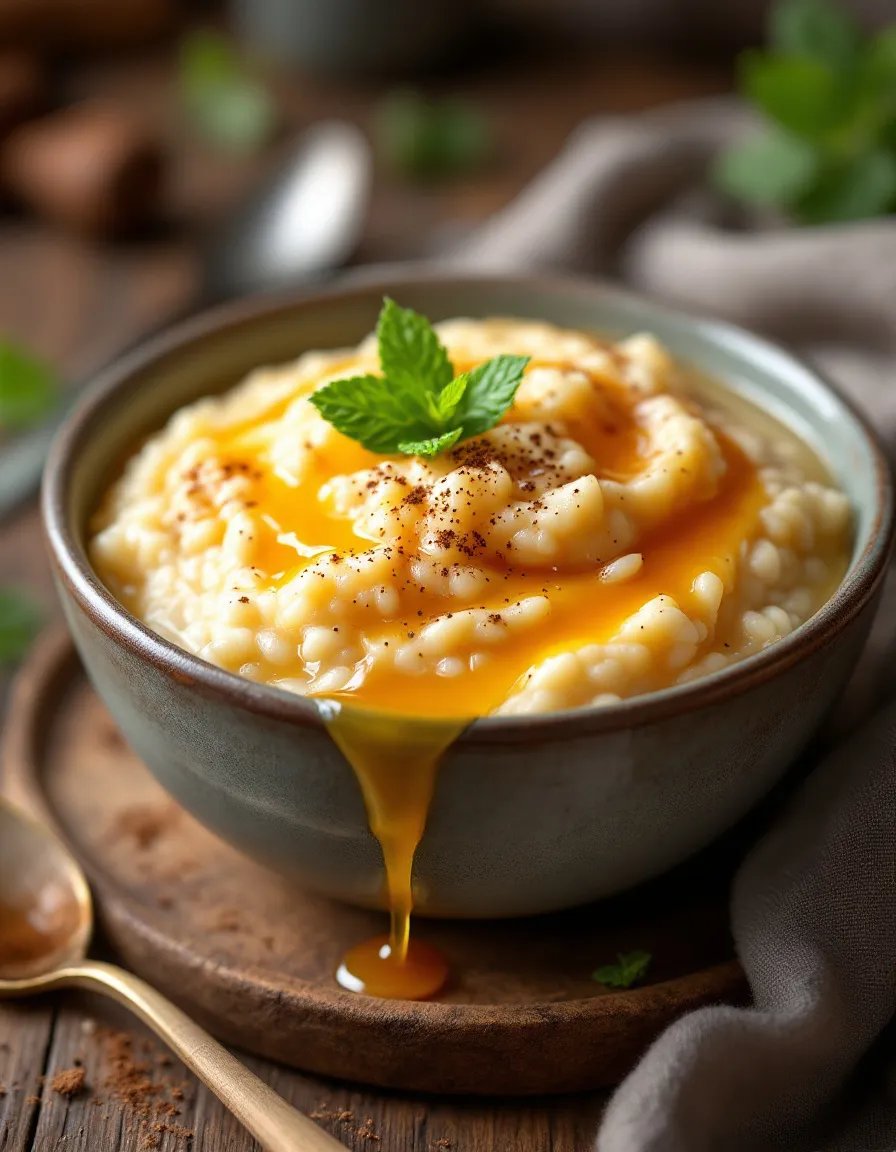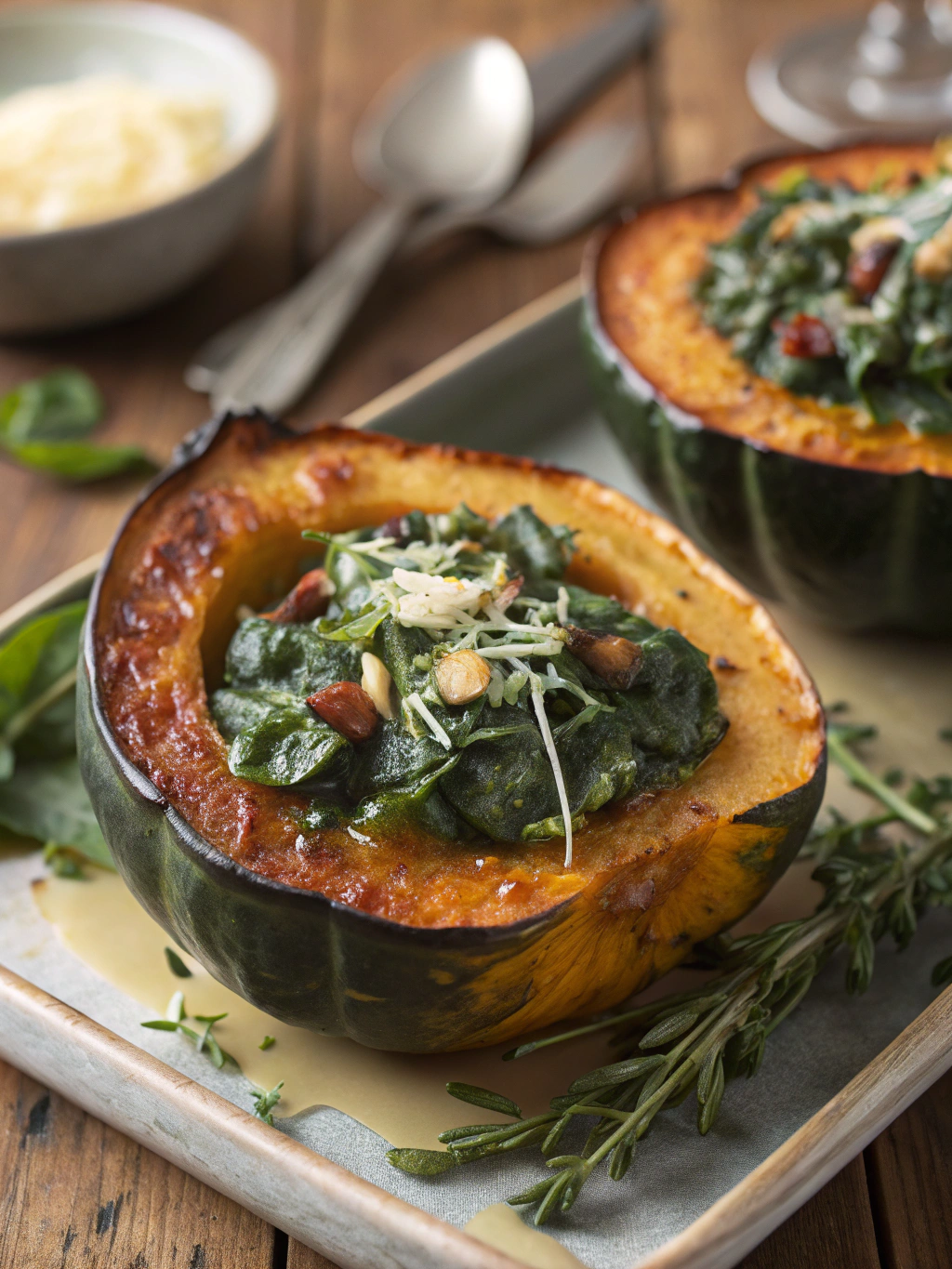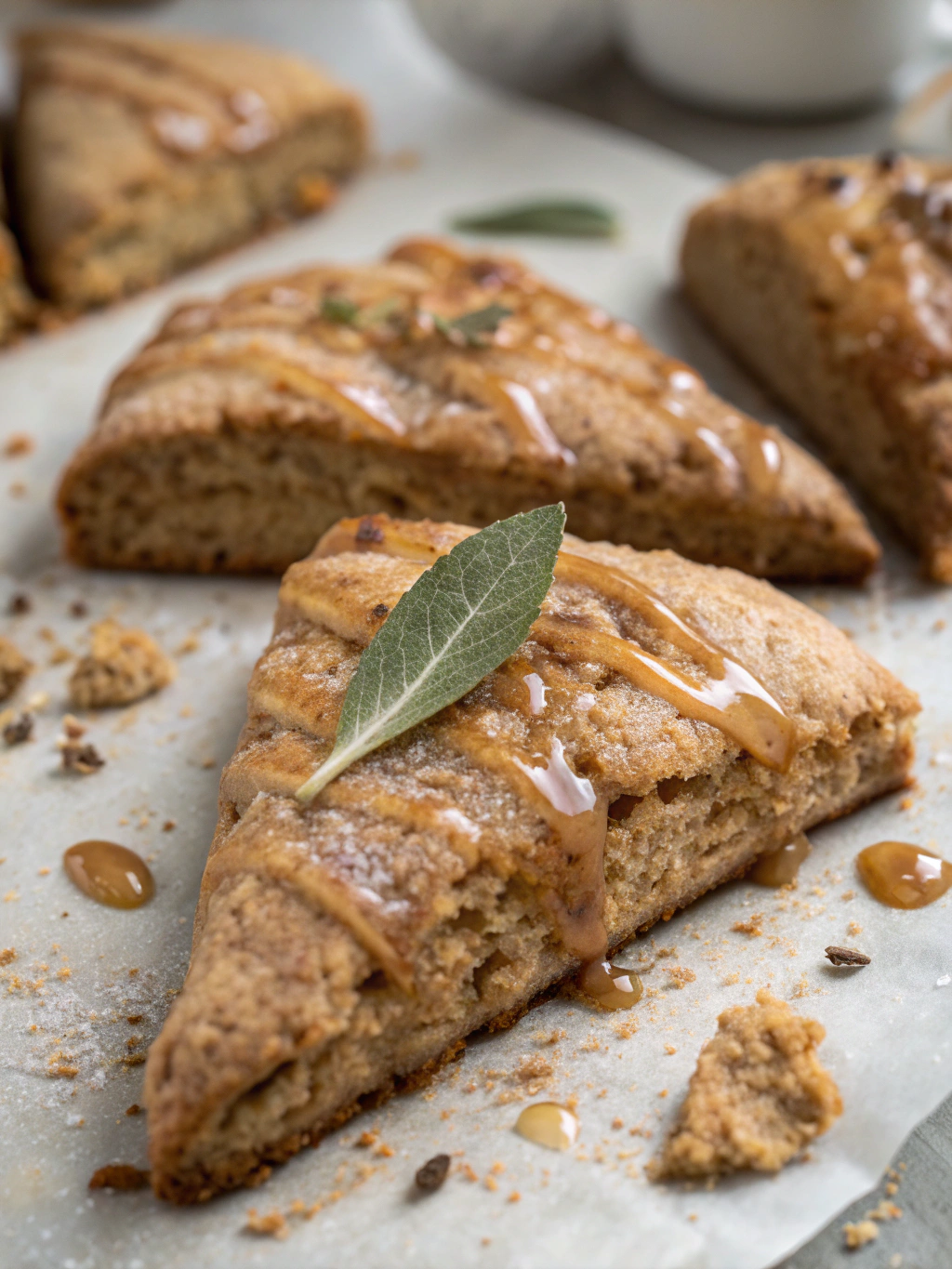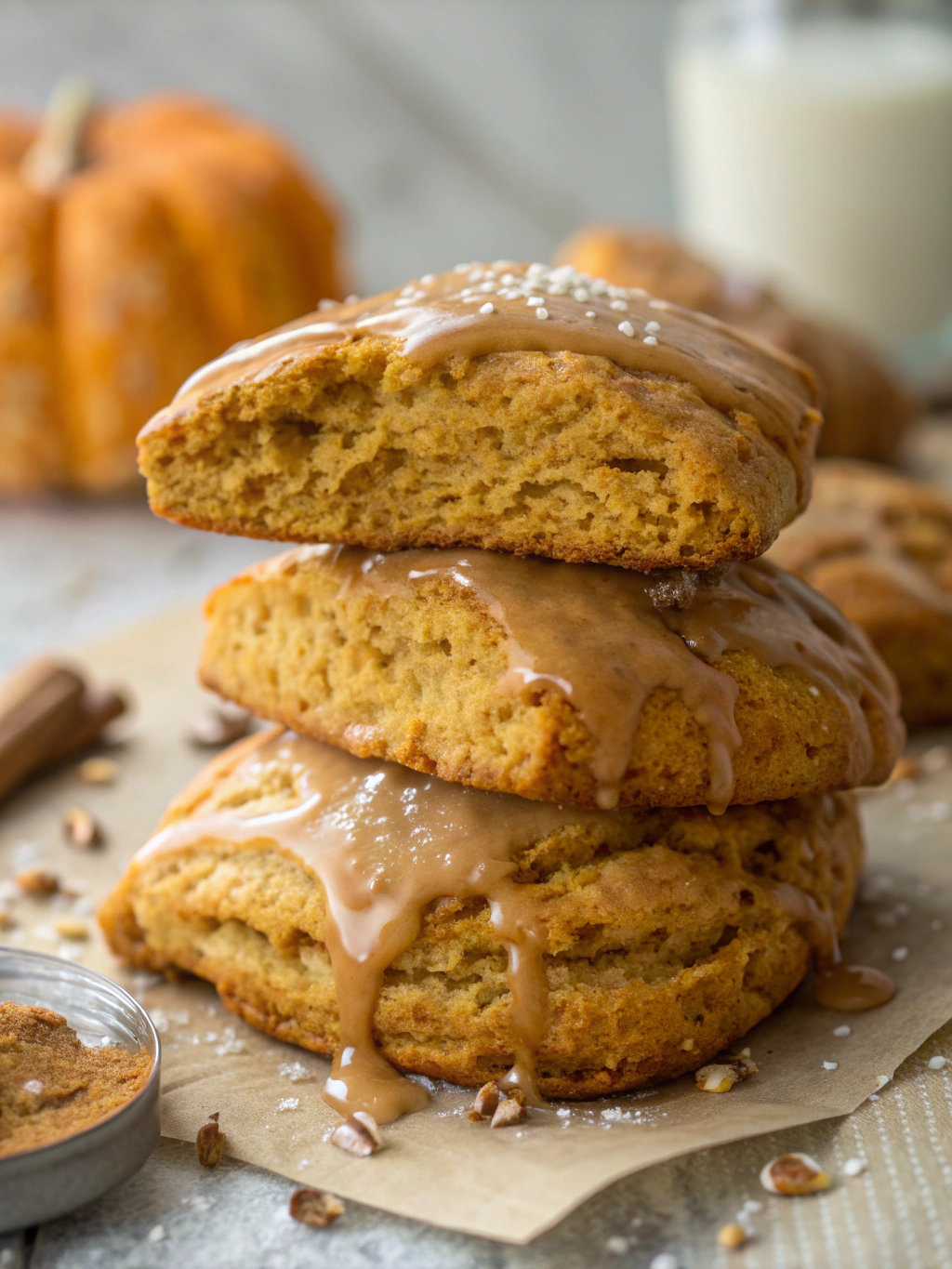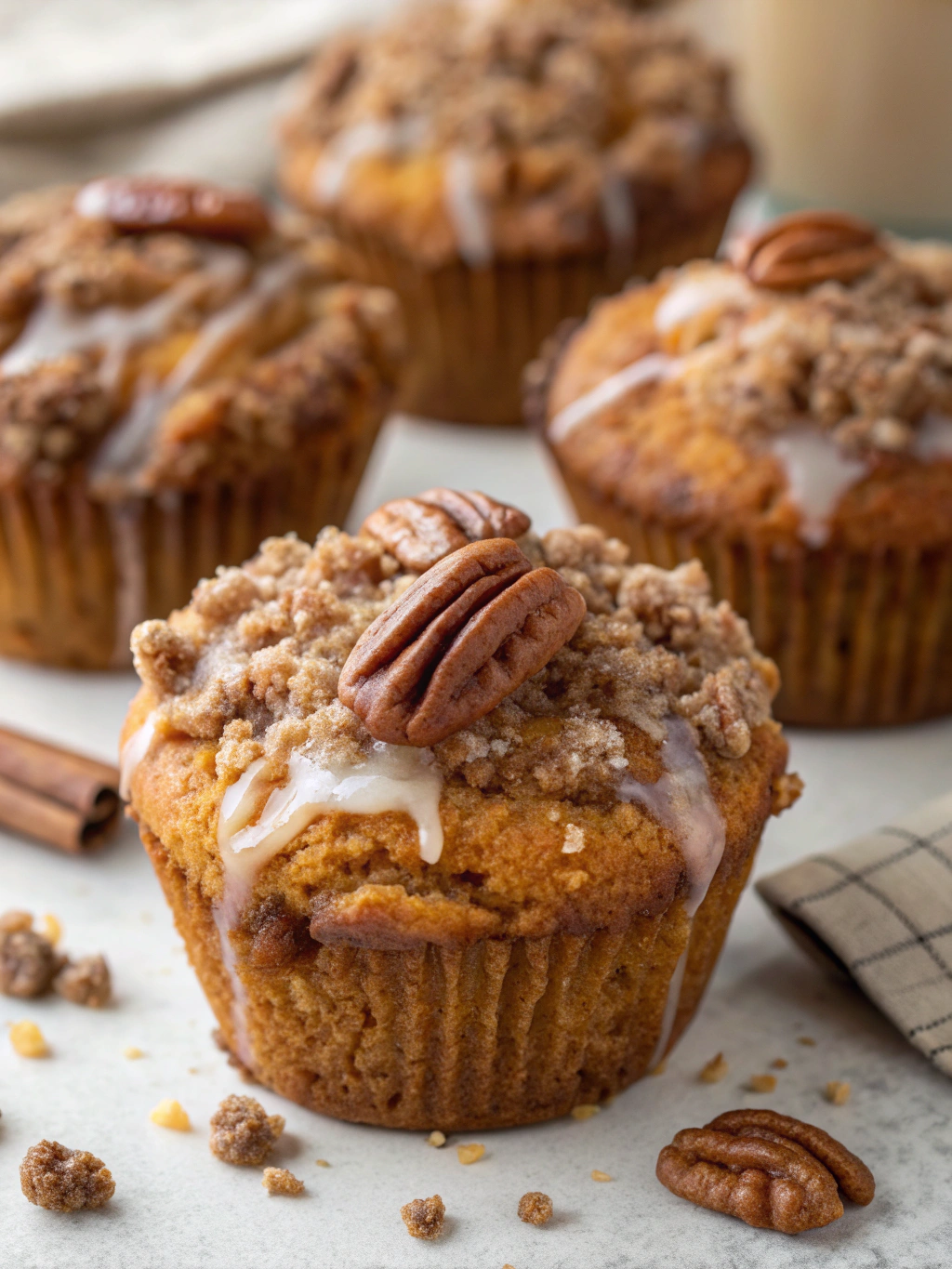Creamy Rice Pudding: A Comforting Dessert for Every Occasion
There’s something undeniably comforting about a bowl of creamy rice pudding. This classic dessert, with its velvety texture and subtle sweetness, has been a favorite across cultures for centuries. Whether you’re craving a warm treat on a chilly evening or a nostalgic dessert that reminds you of home, this rice pudding recipe is sure to hit the spot. Made with simple ingredients like rice, milk, sugar, and a touch of vanilla, it’s a dessert that’s both easy to prepare and deeply satisfying.
The beauty of rice pudding lies in its versatility. It can be served warm or cold, topped with fresh fruit, nuts, or a sprinkle of cinnamon. The creamy consistency and delicate flavor make it a crowd-pleaser for all ages. Plus, it’s a great way to use up leftover rice, making it both economical and practical. Whether you’re a seasoned cook or a beginner in the kitchen, this recipe is straightforward and foolproof, ensuring perfect results every time.
Quick Recipe Highlights
- Flavor Profile: Sweet, creamy, and subtly spiced with vanilla and cinnamon. The combination of milk and sugar creates a rich, comforting taste that’s balanced by the natural starchiness of the rice.
- Texture: Smooth and velvety with tender rice grains that melt in your mouth. The pudding thickens as it cools, creating a luxurious consistency.
- Aroma: Warm and inviting, with notes of vanilla and cinnamon that fill your kitchen as the pudding simmers.
- Visual Appeal: The creamy white base is beautifully complemented by golden cinnamon dusting or vibrant fruit toppings, making it as pleasing to the eye as it is to the palate.
- Skill Level Needed: Perfect for beginners, this recipe requires basic cooking techniques like simmering and stirring.
- Special Equipment: All you need is a medium-sized saucepan and a wooden spoon.
Recipe Overview
- Difficulty Level: This rice pudding recipe is beginner-friendly, requiring minimal cooking skills. The steps are simple, and the ingredients are easy to find, making it a great choice for novice cooks.
- Category: Dessert or snack. It’s versatile enough to be served as a sweet treat after dinner or as a comforting snack any time of day.
- Cuisine: A universal dish with variations found in many cultures, including European, Middle Eastern, and Asian cuisines.
- Cost: Budget-friendly, with most ingredients likely already in your pantry. A single batch costs less than $5 to make.
- Season: Perfect for all seasons. Serve it warm in the winter or chilled in the summer for a refreshing treat.
- Occasion: Ideal for family dinners, potlucks, or even as a comforting dessert during the holidays.
Why You’ll Love This Recipe
This creamy rice pudding recipe is a must-try for anyone who loves comforting desserts. The combination of tender rice and rich, creamy milk creates a texture that’s both satisfying and indulgent. The subtle sweetness, enhanced by vanilla and cinnamon, makes it a dessert that’s not overly sugary but still feels like a treat. It’s the perfect balance of simplicity and flavor.
One of the best things about this recipe is its convenience. With just a handful of ingredients and minimal prep time, you can whip up a batch of rice pudding in no time. It’s also a great way to use up leftover rice, reducing food waste and saving you money. Plus, it’s a versatile dish that can be customized to suit your taste—add raisins, nuts, or fresh fruit for extra flavor and texture.
From a nutritional standpoint, rice pudding offers a good source of carbohydrates and calcium, making it a satisfying dessert that can also provide some energy. While it’s not a low-calorie treat, it’s a wholesome option compared to many store-bought desserts. You can also make it healthier by using low-fat milk or a sugar substitute.
This recipe is also perfect for entertaining. It’s easy to make in large quantities, and its comforting flavor appeals to a wide range of palates. Whether you’re hosting a dinner party or bringing a dish to a potluck, rice pudding is sure to be a hit. Plus, it’s a great conversation starter, as many people have fond memories of enjoying it in their childhood.
Finally, rice pudding is incredibly cost-effective. The ingredients are affordable and readily available, making it a budget-friendly dessert option. It’s a great way to create something delicious without breaking the bank. Whether you’re cooking for yourself or a crowd, this recipe is both economical and satisfying.
Historical Background and Cultural Significance
Rice pudding has a rich history that spans centuries and continents. Its origins can be traced back to ancient times, where it was a popular dish in both Asia and Europe. In many cultures, rice pudding was considered a symbol of prosperity and fertility, often served during celebrations and festivals. Its simplicity and affordability made it accessible to people of all social classes, ensuring its widespread popularity.
In Europe, rice pudding became a staple dessert during the Middle Ages. It was often flavored with spices like cinnamon and nutmeg, which were prized for their exotic flavors. In Scandinavia, rice pudding is traditionally served during Christmas, often with an almond hidden inside—a fun tradition that brings good luck to the person who finds it. In the Middle East, rice pudding, known as “muhalabia,” is flavored with rose water and topped with pistachios, creating a unique and aromatic dessert.
Over time, rice pudding evolved to reflect the tastes and ingredients of different regions. In India, for example, it’s known as “kheer” and is made with basmati rice, cardamom, and saffron. In Latin America, it’s often flavored with coconut milk and topped with tropical fruits. Despite these variations, the core elements of rice, milk, and sweetness remain consistent, highlighting the dish’s universal appeal.
Today, rice pudding continues to be a beloved dessert around the world. Its comforting flavor and nostalgic appeal make it a favorite for both home cooks and professional chefs. Whether enjoyed as a simple family dessert or a gourmet treat, rice pudding’s enduring popularity is a testament to its timeless charm.
Ingredient Deep Dive
Rice
Rice is the star ingredient in this recipe, providing the base for the pudding’s creamy texture. Short-grain or medium-grain rice works best, as it releases more starch during cooking, creating a thicker consistency. Arborio rice, commonly used in risotto, is an excellent choice for its creamy texture. Rice has been a dietary staple for thousands of years, valued for its versatility and nutritional benefits. It’s a good source of carbohydrates, providing energy, and contains small amounts of protein and fiber.
Milk
Milk adds richness and creaminess to the pudding. Whole milk is ideal for the creamiest texture, but you can use low-fat or plant-based alternatives like almond or oat milk for a lighter version. Milk is a great source of calcium and vitamin D, supporting bone health. When heated, the proteins in milk help thicken the pudding, creating a smooth and velvety consistency.
Sugar
Sugar sweetens the pudding and balances the natural starchiness of the rice. Granulated white sugar is the most common choice, but you can experiment with brown sugar, honey, or maple syrup for different flavor profiles. Sugar also helps create a glossy finish, enhancing the pudding’s visual appeal. While it’s a key ingredient, you can adjust the amount to suit your taste or dietary needs.
Vanilla
Vanilla adds a warm, aromatic flavor to the pudding. Pure vanilla extract is preferred for its rich, complex taste, but vanilla beans can be used for an even more intense flavor. Vanilla has been prized for centuries for its sweet, floral aroma and is often associated with comfort and indulgence. It’s a versatile ingredient that enhances both sweet and savory dishes.
Cinnamon
Cinnamon provides a warm, spicy note that complements the sweetness of the pudding. It’s often used as a garnish, sprinkled on top for both flavor and visual appeal. Cinnamon has been used for thousands of years for its medicinal properties and distinctive flavor. It’s rich in antioxidants and has anti-inflammatory benefits, making it a healthy addition to your dessert.
Common Mistakes to Avoid
- Using the wrong type of rice: Long-grain rice doesn’t release enough starch, resulting in a thinner pudding. Stick to short-grain or medium-grain varieties.
- Overcooking the rice: This can make the pudding mushy. Cook the rice until it’s tender but still has a slight bite.
- Not stirring enough: Stirring prevents the rice from sticking to the bottom of the pan and ensures even cooking.
- Adding sugar too early: Sugar can slow down the cooking process. Add it toward the end for the best results.
- Using cold milk: Adding cold milk can lower the temperature and extend the cooking time. Use warm or room-temperature milk instead.
- Skipping the vanilla: Vanilla adds depth of flavor. Don’t omit it unless you’re using a substitute like almond extract.
- Not letting it cool: Rice pudding thickens as it cools. Let it sit for at least 10 minutes before serving.
- Overloading with toppings: While toppings add flavor, too many can overwhelm the dish. Keep it simple for the best balance.
Essential Techniques
Simmering
Simmering is the key to achieving the perfect creamy texture. It allows the rice to cook slowly, absorbing the milk and releasing starch. Keep the heat low to prevent scorching and stir frequently to ensure even cooking. A gentle simmer ensures the pudding thickens without becoming too dense.
Stirring
Stirring is crucial for preventing the rice from sticking to the pan and ensuring a smooth consistency. Use a wooden spoon to gently stir the mixture, especially as it thickens. Consistent stirring also helps distribute the heat evenly, preventing hot spots that can cause burning.
Flavor Infusion
Infusing the milk with vanilla and cinnamon enhances the pudding’s flavor. Add these ingredients early in the cooking process to allow their flavors to meld with the rice and milk. For a more intense flavor, use a vanilla bean or cinnamon stick instead of extracts.
Cooling
Allowing the pudding to cool slightly before serving helps it set and thicken. Cover it with plastic wrap to prevent a skin from forming on the surface. If you prefer a warm pudding, reheat it gently before serving.
Pro Tips for Perfect Rice Pudding
- Use leftover rice: If you have cooked rice on hand, it can save time and still yield great results.
- Toast the rice: Lightly toasting the rice before adding the milk enhances its nutty flavor.
- Add a pinch of salt: Salt balances the sweetness and enhances the overall flavor.
- Experiment with spices: Try adding cardamom, nutmeg, or star anise for a unique twist.
- Use a double boiler: This method prevents scorching and ensures even cooking.
- Garnish creatively: Fresh fruit, toasted nuts, or a drizzle of caramel can elevate the presentation.
- Chill before serving: For a refreshing summer dessert, serve the pudding cold with a dollop of whipped cream.
- Store properly: Keep leftovers in an airtight container in the fridge for up to three days.
Variations and Adaptations
Regional Variations
Rice pudding takes on different forms around the world. In India, kheer is made with basmati rice, cardamom, and saffron. In Latin America, arroz con leche is often flavored with coconut milk and cinnamon. Scandinavian versions include a hidden almond for good luck. Experimenting with these variations can introduce you to new flavors and traditions.
Seasonal Adaptations
In the fall, add pumpkin puree and pumpkin spice for a festive twist. In the summer, top with fresh berries or mango for a refreshing treat. Seasonal fruits and spices can transform the pudding to suit any time of year.
Dietary Modifications
For a vegan version, use plant-based milk and a sugar substitute. Gluten-free? Rice pudding is naturally gluten-free, making it a safe choice for those with dietary restrictions. You can also reduce the sugar or use a sugar alternative for a healthier option.
Flavor Variations
Experiment with different flavorings like almond extract, citrus zest, or cocoa powder. Adding a splash of rum or bourbon can create a decadent adult version. The possibilities are endless, allowing you to customize the pudding to your taste.
Texture Modifications
For a thicker pudding, use less milk or cook it longer. For a lighter version, add more milk or use a thinner plant-based alternative. You can also blend part of the pudding for a smoother texture.
Presentation Alternatives
Serve the pudding in individual ramekins for an elegant presentation. Layer it with fruit compote or chocolate sauce for a parfait-style dessert. Use edible flowers or mint leaves for a gourmet touch.
Serving and Presentation Guide
Plating Techniques
For a classic presentation, serve the pudding in a bowl with a sprinkle of cinnamon on top. Use a piping bag to create elegant swirls for a more refined look. Individual servings in small jars or cups make for a charming presentation.
Garnishing Ideas
Fresh fruit, toasted nuts, or a drizzle of honey can add both flavor and visual appeal. A dusting of powdered sugar or cocoa powder creates a professional finish. Edible flowers or mint leaves add a pop of color.
Traditional Accompaniments
In many cultures, rice pudding is served with a side of fruit compote or jam. A dollop of whipped cream or a scoop of ice cream can add richness. For a Middle Eastern twist, top with rose water and pistachios.
Modern Serving Suggestions
Serve the pudding as part of a dessert buffet, paired with other sweet treats. Use it as a filling for pastries or crepes for a creative twist. Layer it with granola and yogurt for a breakfast parfait.
Temperature Considerations
Rice pudding can be served warm, at room temperature, or chilled. Warm pudding is comforting on a cold day, while chilled pudding is refreshing in the summer. Adjust the temperature to suit the occasion and your preference.
Portion Control Tips
While rice pudding is delicious, it’s also rich. Serve smaller portions and pair with fresh fruit for a balanced dessert. Use smaller bowls or cups to help control portion sizes.
Wine and Beverage Pairing
Wine Pairings
A sweet dessert wine like Moscato or Riesling complements the creamy sweetness of rice pudding. For a richer pairing, try a fortified wine like Port or Sherry. The wine’s sweetness balances the pudding’s richness, creating a harmonious combination.
Non-Alcoholic Alternatives
A cup of chai tea or spiced apple cider pairs beautifully with rice pudding. The warm spices in these beverages enhance the pudding’s flavor. For a refreshing option, try a glass of iced tea or lemonade.
Coffee/Tea Pairings
A strong espresso or cappuccino cuts through the sweetness, creating a balanced dessert experience. Herbal teas like chamomile or peppermint provide a light, refreshing contrast. Experiment with different flavors to find your perfect pairing.
Temperature Considerations
Serve warm beverages with warm pudding and chilled drinks with cold pudding for the best experience. The temperature contrast can enhance the overall enjoyment of the dessert.
Serving Suggestions
Pair the pudding with a cheese plate for a sophisticated dessert course. The creamy texture of the pudding contrasts nicely with the sharpness of aged cheeses. Add a selection of nuts and dried fruits for a complete dessert experience.
Storage and Shelf Life
Storage Methods
Store rice pudding in an airtight container in the refrigerator for up to three days. Cover the surface with plastic wrap to prevent a skin from forming. For longer storage, freeze the pudding in portion-sized containers.
Temperature Requirements
Keep the pudding refrigerated at all times to maintain freshness. If serving cold, let it sit at room temperature for 10-15 minutes to take the chill off. Reheat gently on the stovetop or in the microwave.
Container Recommendations
Use glass or BPA-free plastic containers for storage. Mason jars are a great option for individual servings. Avoid metal containers, as they can react with the acidic ingredients.
Signs of Spoilage
Discard the pudding if it develops an off smell, mold, or an unusual texture. Fresh rice pudding should have a creamy consistency and a sweet, milky aroma. When in doubt, err on the side of caution.
Reheating Instructions
Reheat the pudding gently on the stovetop, stirring frequently to prevent scorching. Add a splash of milk to restore the creamy texture if needed. Microwave in short intervals, stirring between each, to ensure even heating.
Freezing Guidelines
Freeze the pudding in airtight containers for up to two months. Thaw in the refrigerator overnight before reheating. Stir well to restore the creamy texture after thawing.
Make Ahead Strategies
Prep Timeline
You can prepare the pudding up to two days in advance. Store it in the refrigerator and reheat gently before serving. This makes it a great option for entertaining or meal prep.
Storage Between Steps
If making ahead, cool the pudding completely before transferring it to storage containers. Cover tightly to prevent drying out. Reheat gently, adding a splash of milk if needed.
Quality Impact Assessment
The pudding may thicken slightly when stored, but this can be easily remedied by adding a bit of milk when reheating. The flavor will deepen over time, making it even more delicious.
Assembly Tips
If serving cold, assemble the pudding with fresh toppings just before serving to maintain texture and freshness. For warm pudding, reheat gently and add toppings at the last minute.
Reheating Guidelines
Reheat the pudding slowly to prevent scorching. Stir frequently and add milk as needed to restore the creamy texture. Avoid overheating, as this can cause the rice to become mushy.
Fresh Element Additions
Add fresh fruit, nuts, or whipped cream just before serving to maintain their texture and flavor. This ensures the pudding stays fresh and vibrant.
Scaling Instructions
Halving the Recipe
To halve the recipe, simply reduce all ingredients by half. Use a smaller saucepan to ensure even cooking. The cooking time may be slightly shorter, so keep an eye on the consistency.
Doubling or Tripling
For larger batches, double or triple the ingredients. Use a larger pot to accommodate the increased volume. Stir more frequently to ensure even cooking and prevent sticking.
Equipment Adjustments
When scaling up, ensure your pot is large enough to prevent overflow. A wider pot allows for faster evaporation, which can affect the cooking time. Adjust the heat as needed to maintain a gentle simmer.
Timing Modifications
Larger batches may take slightly longer to cook. Keep an eye on the consistency and adjust the cooking time as needed. Stir frequently to prevent scorching.
Storage Considerations
When making larger batches, store the pudding in multiple smaller containers for easier reheating. Label and date the containers to keep track of freshness.
Nutritional Deep Dive
Macro Breakdown
Rice pudding is primarily a source of carbohydrates, providing energy. The milk adds protein and fat, creating a balanced macronutrient profile. Adjust the ingredients to suit your dietary needs.
Micronutrient Analysis
Milk provides calcium and vitamin D, supporting bone health. Rice offers small amounts of B vitamins and iron. Cinnamon adds antioxidants, making this dessert both delicious and nutritious.
Health Benefits
The calcium in milk supports strong bones and teeth. The carbohydrates in rice provide quick energy, making this a great post-workout snack. Cinnamon has anti-inflammatory properties and may help regulate blood sugar.
Dietary Considerations
Rice pudding can be adapted to suit various dietary needs. Use plant-based milk for a vegan version or reduce the sugar for a lower-calorie option. It’s naturally gluten-free, making it suitable for those with celiac disease.
Portion Analysis
A standard serving of rice pudding provides a satisfying dessert without being overly indulgent. Pair it with fresh fruit for added nutrients and fiber. Adjust portion sizes to fit your calorie needs.
Weight Management Tips
For a lighter version, use low-fat milk and reduce the sugar. Add fresh fruit for natural sweetness and extra fiber. Enjoy in moderation as part of a balanced diet.
Dietary Adaptations
Gluten-Free
Rice pudding is naturally gluten-free, making it a safe choice for those with celiac disease or gluten sensitivity. Ensure all ingredients, including flavorings, are certified gluten-free.
Dairy-Free
Use plant-based milk like almond, oat, or coconut milk for a dairy-free version. Adjust the sweetness to taste, as some plant-based milks are naturally sweeter than others.
Vegan
Replace the milk with a plant-based alternative and use a sugar substitute if desired. Add a splash of coconut cream for extra richness. Ensure all ingredients are vegan-certified.
Low-Carb
Use cauliflower rice instead of regular rice and a low-carb sweetener like stevia. Reduce the amount of milk or use a low-carb alternative like unsweetened almond milk.
Keto
Replace the rice with chia seeds or flaxseed meal for a keto-friendly version. Use heavy cream instead of milk and a keto-approved sweetener like erythritol.
Paleo
Use coconut milk and a natural sweetener like honey or maple syrup. Avoid processed ingredients and stick to whole, natural foods.
Low-FODMAP
Use lactose-free milk and a low-FODMAP sweetener like maple syrup. Stick to small portions to avoid triggering symptoms.
Other Specific Diets
For other dietary needs, consult a nutritionist or dietitian to adapt the recipe. Many substitutions are possible to accommodate various health conditions and preferences.
Troubleshooting Guide
Texture Issues
If the pudding is too thin, cook it longer to evaporate excess liquid. If it’s too thick, add more milk and stir until the desired consistency is reached. Adjust the rice-to-milk ratio for future batches.
Flavor Balance
If the pudding is too sweet, add a pinch of salt to balance the flavors. If it’s not sweet enough, stir in a bit more sugar or a natural sweetener. Taste as you go to ensure the perfect balance.
Temperature Problems
If the pudding is too hot, let it cool slightly before serving. If it’s too cold, reheat gently on the stovetop or in the microwave. Adjust the temperature to suit your preference.
Equipment Challenges
If you don’t have a double boiler, use a heatproof bowl over a pot of simmering water. Stir frequently to prevent sticking and ensure even cooking. Use a non-stick pan for easier cleanup.
Ingredient Substitutions
If you’re out of an ingredient, consult the substitution options in the recipe. Many ingredients can be swapped without significantly affecting the final result. Experiment to find what works best for you.
Timing Concerns
If the pudding is taking longer to cook, increase the heat slightly and stir more frequently. If it’s cooking too quickly, reduce the heat and add more milk. Adjust the cooking time as needed.
Recipe Success Stories
Community Feedback
Many readers have shared their success stories with this recipe, praising its simplicity and delicious results. One reader said, “This is the best rice pudding I’ve ever made—creamy, comforting, and so easy!”
Variation Successes
Others have experimented with different flavors and toppings, creating unique versions of the recipe. One reader added cardamom and saffron for an Indian-inspired twist, while another used coconut milk for a tropical flavor.
Adaptation Stories
Some readers have adapted the recipe to suit dietary needs, such as using almond milk for a dairy-free version or reducing the sugar for a healthier option. These adaptations have been met with great success.
Reader Suggestions
Many readers have suggested adding raisins or nuts for extra texture and flavor. Others recommend serving the pudding with a drizzle of caramel or chocolate sauce for a decadent treat.
Photography Tips
For stunning photos, use natural light and a simple background. Garnish the pudding with fresh fruit or a sprinkle of cinnamon for added visual appeal. Experiment with different angles and compositions to capture the perfect shot.
Frequently Asked Questions
Can I use brown rice instead of white rice?
Yes, but brown rice takes longer to cook and may result in a slightly different texture. Adjust the cooking time accordingly.
Can I make this recipe in a slow cooker?
Absolutely! Combine all ingredients in the slow cooker and cook on low for 4-6 hours, stirring occasionally.
How do I prevent the pudding from forming a skin?
Cover the pudding with plastic wrap, pressing it directly onto the surface before refrigerating.
Can I freeze rice pudding?
Yes, freeze it in airtight containers for up to two months. Thaw in the refrigerator before reheating.
What’s the best way to reheat rice pudding?
Reheat gently on the stovetop, stirring frequently. Add a splash of milk to restore the creamy texture.
Can I use plant-based milk?
Yes, almond, oat, or coconut milk work well. Adjust the sweetness to taste.
How long does rice pudding last in the fridge?
It stays fresh for up to three days when stored in an airtight container.
Can I add eggs to make it richer?
Yes, whisk an egg and temper it with some of the hot pudding before stirring it back in. Cook gently to avoid curdling.
What’s the best rice for pudding?
Short-grain or medium-grain rice works best for its creamy texture. Arborio rice is a great choice.
Can I make this recipe sugar-free?
Yes, use a sugar substitute like stevia or monk fruit. Adjust the amount to taste.
Additional Resources
Related Recipes
Explore other comforting desserts like bread pudding, tapioca pudding, or custard. These recipes share similar techniques and ingredients, making them great additions to your repertoire.
Technique Guides
Learn more about essential cooking techniques like simmering, stirring, and flavor infusion. These skills will help you master not just rice pudding, but a wide range of dishes.
Ingredient Information
Discover the history and uses of key ingredients like rice, milk, and cinnamon. Understanding these ingredients will enhance your cooking and inspire new creations.
Equipment Recommendations
Invest in quality kitchen tools like a heavy-bottomed saucepan, wooden spoons, and airtight containers. These tools will make cooking easier and more enjoyable.
Seasonal Variations
Experiment with seasonal ingredients to create unique versions of rice pudding. From pumpkin in the fall to berries in the summer, the possibilities are endless.
Join the Conversation
Social Media Sharing
Share your rice pudding creations on social media using #CreamyRicePudding. Connect with other food lovers and exchange tips and ideas.
Photography Tips
Capture stunning photos of your pudding with natural light and creative garnishes. Share your photos and inspire others to try the recipe.
Recipe Reviews
Leave a review and let us know how the recipe turned out. Your feedback helps us improve and create even better recipes.
Community Engagement
Join our online community to discuss recipes, share tips, and connect with fellow food enthusiasts. Your input is valuable and appreciated.
Recipe Variations
Share your unique twists on the recipe. Whether it’s a new flavor combination or a creative presentation, we’d love to hear about it.
The Recipe
Creamy Rice Pudding
Serves: 6
Prep Time: 10 mins
Cook Time: 30 mins
Total Time: 40 mins
Kitchen Equipment Needed
- Medium-sized saucepan
- Wooden spoon
- Measuring cups and spoons
Ingredients
- 1 cup short-grain rice
- 4 cups whole milk
- 1/2 cup granulated sugar
- 1 teaspoon vanilla extract
- 1/2 teaspoon ground cinnamon
- Pinch of salt
Directions
- In a medium saucepan, combine the rice, milk, and salt. Bring to a gentle simmer over medium heat, stirring frequently.
- Reduce the heat to low and cook, stirring occasionally, for about 25 minutes or until the rice is tender and the mixture has thickened.
- Stir in the sugar, vanilla, and cinnamon. Cook for an additional 5 minutes, stirring constantly.
- Remove from heat and let cool slightly. Serve warm or chilled, garnished with additional cinnamon if desired.
Recipe Notes
- For a richer pudding, substitute 1 cup of milk with heavy cream.
- Add raisins or nuts for extra texture and flavor.
- Store leftovers in an airtight container in the refrigerator for up to three days.

